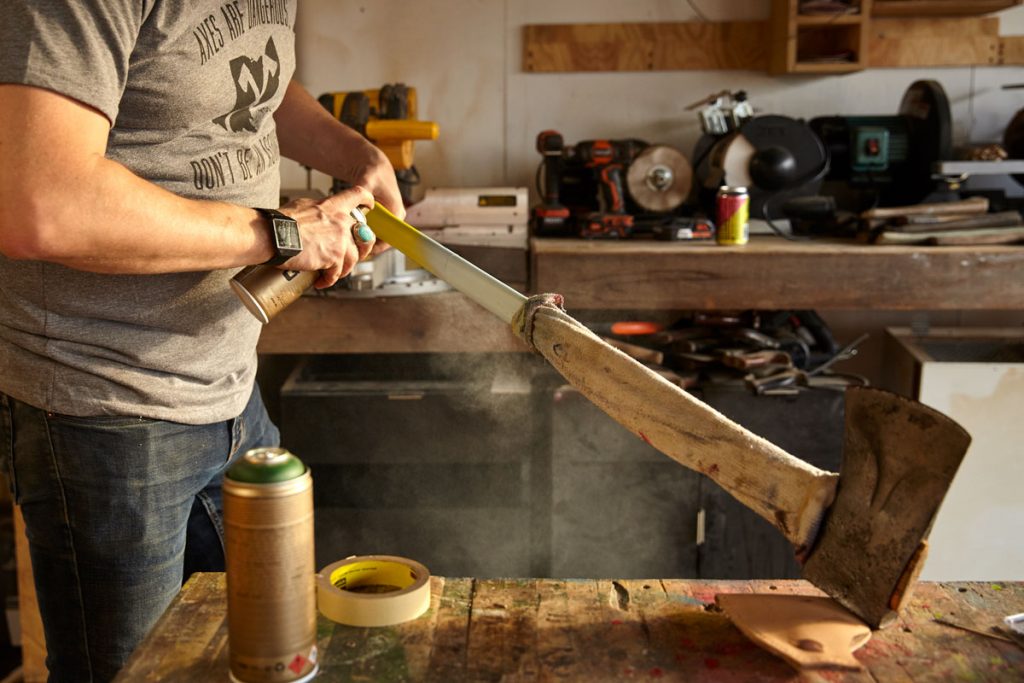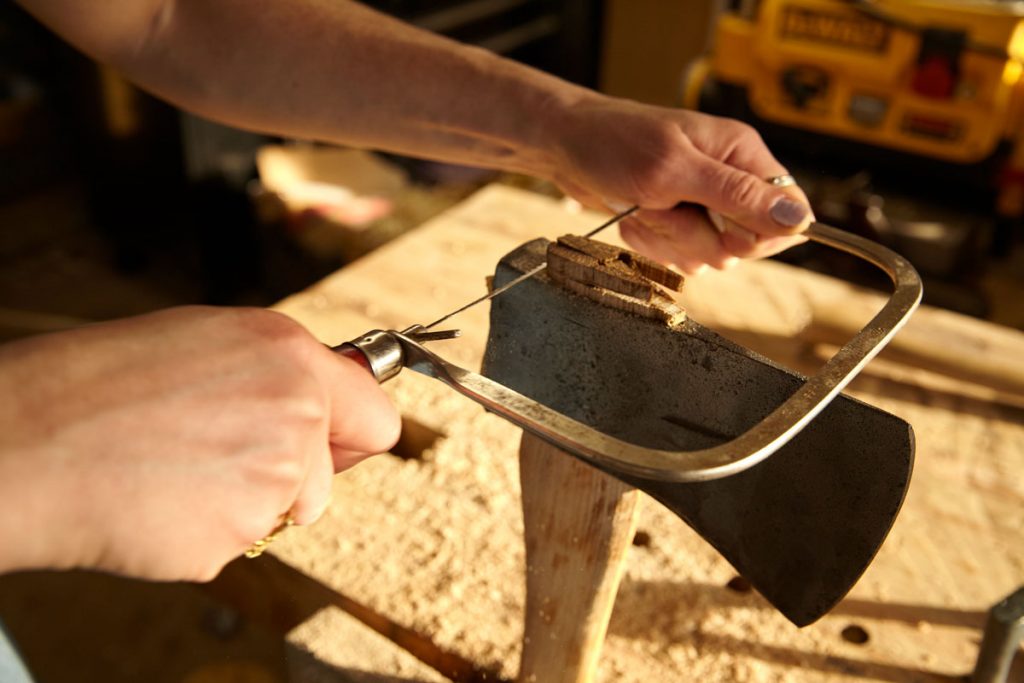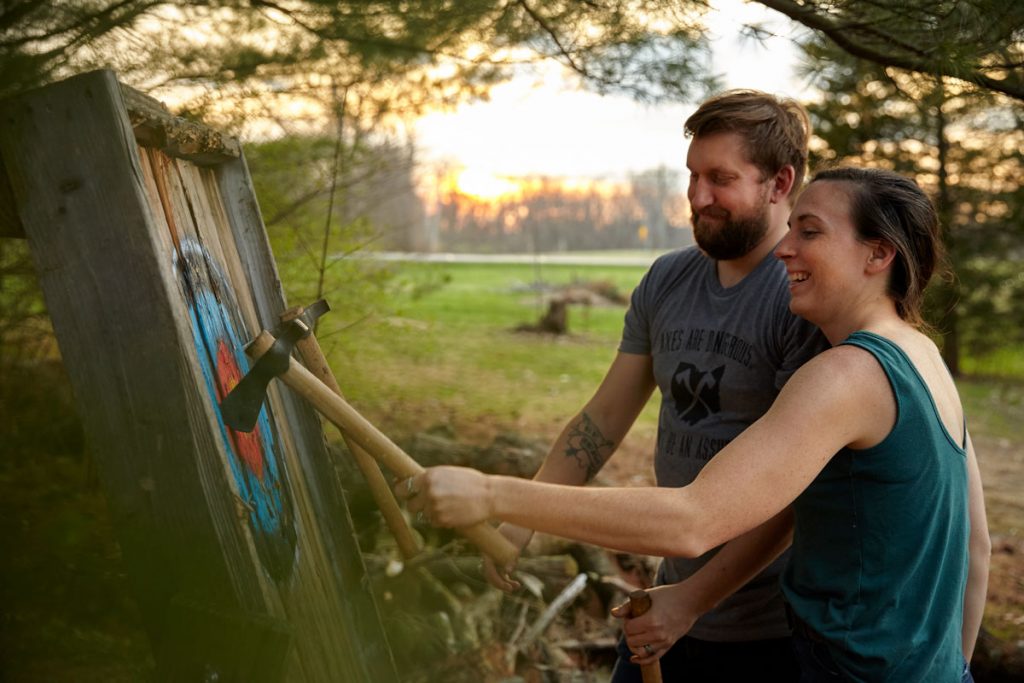Yellowood Design preserves history one chop at a time

millennial | writer | human
Inside Cori and Benjamin Rowley’s workshop and retail garage, folk music and the smell of sawdust fills the air. Rusty axe heads throughout testify to hard work and a craft of yesteryear. Here, old tools find new life.
Yellowood Design began when Benjamin found his great-grandfather’s nearly unusable axe after his passing. The head was dull. The handle was worn from abrasive usage, and all that remained was the craftsmanship that had withstood a test of time. To Benjamin, the axe represented both his great-grandfather, and a time when hard manual labor could provide wood for warmth and cooking. That sense of emotional connection is the template for Yellowood now as well.

When someone is looking to have an axe restored by Yellowood, there’s an online prompt asking for themes, colors, and other creative ideas that truly channel the person or idea the customer wants to showcase. There are a few designs that come from a “greatest hits” book, but largely each axe design is unique.
“There are some really nice axes that we’ve made that were just axes that we found and made for somebody,” Benjamin explained. “But when you’re making history come back to life, and it just means that much more to a person, it’s special. It’s hard to put into words.”
Sometimes the more oddly-specific requests offer the studio a chance to go down a rabbit hole and really explore through other people’s history. One client, a hog farmer from England, was a huge fan of John Wayne and spaghetti westerns so the Rowleys created a Pinterest mood board and spent hours exploring design ideas.

The usage of the axe is in the eye of the beholder, but the beautification is a team process. While Cori and Benjamin work together to brainstorm paint designs, icons and emblems, and leather sheath layouts, Benjamin handles much of the restoration and creation process of the axes. Cori handles receiving the design inspiration information from the client, relays the information to Benjamin, and those stories and facts stay in the front of his mind while he works.
This collaborative effort not only helps lighten the load, it pushes each other to be better makers. While Benjamin initially taught Cori techniques for leather stitching, she’s quickly caught up and the student is becoming the teacher.
BROUGHT TO YOU BY
Benjamin, a store designer for L Brands, and Cori, a product designer for Design Central, are both brutally humble about their work. To this day, the two are cautious and thankful for their success. When Cori is emailing clients about progress, she almost always thanks them for “trusting them with the axe restoration project.” She said she understands that many of these restorations are in homage of important figures so the pressure to produce is high. Benjamin said he still can recall his most nerve-racking restoration to date: a black raven axe.

“A black raven, a crappy one, is $400. This one was perfect. He just wanted me to sharpen it. The whole time I was nervous as can be. ‘Don’t screw this up.’ A. I can’t afford to replace it, and B. I don’t know if we could’ve even found anything like it.”
While axes and hatchets seem to be the trademark of Yellowood Design, the adventure to restore and sharpen doesn’t stop at creations of destruction. The Rowleys have recently found a new market of vintage and historic items, and it comes in the form of heirloom pocket knives. It began just as a means of loving to sharpen blades and quickly became another hobby the two have become enamoured by. It also helps that heirloom pocket knives are much smaller and cheaper, making them a perfect little score at pop-ups and farmers markets.

It seems like the only thing they really won’t sharpen is non-American made products. It’s nothing personal—it’s just the American steel quality in the early 1900s is unparalleled to today’s standards. Since adding pocket knife sharpening to their list of talents, they’ve seen anything from classic Boy Scouts Of America knives to Army-issued pocket knives during war times. In other words, if it’s a blade with a story, the Rowleys are probably interested.

All axe-throwing bar references aside, the Rowleys believe their craft really speaks to this generation, a generation that’s lived through recession.
“You know what it’s like to lose something. You know what it’s like to work really hard and to be scrappy,” said Cori. I think these people really cherish knowing there’s a part of their family that had to work really, really hard.”
For more information on how to order your own custom axe, or have your personal axe sharpened and/or restored, check out yellowoodesign.com
BROUGHT TO YOU BY




